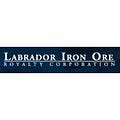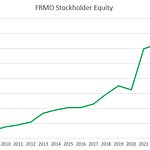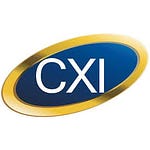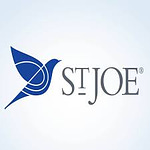Listen to the Special Situation Investing Podcast on Apple Podcasts, on the website, or wherever you listen.
Welcome to Episode 41 of Special Situation Investing.
The Labrador Iron Ore Royalty company dates back 83 years to the year 1938 when its predecessor company, Labrador Mining and Exploration Limited, was granted extensive exploration and leasing rights in Labrador west. Today, The Iron Ore Company of Canada is responsible for the area’s infrastructure and day-to-day mining operations. But beginning with Labrador Mining & Exploration Ltd and continuing next with the Labrador Iron Ore Royalty Income Fund, all the way to today’s Labrador Iron Ore Royalty Company, there has always been a royalty recipient benefiting from Newfoundland’s mineral resources. The current Labrador Iron Ore Royalty company dates back to 2010 when the company restructured the existing royalty beneficiary into its current form.
Labrador Iron Ore Royalty Company, derives its income through a 15.1% interest in the underlying operating mine, a 7% gross overriding royalty on all iron ore shipped from its acreage, and a $0.10 per tonne commission on each tonne of ore shipped (European tonne). In its first decade of operation from 2010-2020, the company paid out 99% of its revenue to shareholders in quarterly installments that totaled $33.39 per share up to that point.
Breaking down the company’s three sources of revenue further we find the following. Based on current iron ore reserve estimates, the mine is projected to last another 23 years or until about the year 2045. The mine ships about 20 mm tonnes of ore annually meaning that another 460 mm tonnes remain to be extracted.
Hopefully, the company can renegotiate its 10 cent per tonne commission as inflation erodes the value of that payment, but so far I’ve found no indication of an inflation related escalator in the company’s governing documents. In any case, at a flat ten cents per tonne the company is set to earn another 46 mm in commissions over the remaining 23 years of the mine’s life against a market cap of $1.4 bil.
The company’s next largest form of revenue stems from its 15% interest in the underlying mine, Iron Ore Company of Canada. In some years, the dividends received by the operating mine are significant while in others low iron ore prices and high capital investment expenses result in no dividend payment to the royalty company.
The Iron Ore Company of Canada is not publicly traded but rather is co-owned in the following proportions by these three companies: Labrador Iron Ore Royalty Company at 15.1%, Mitsubishi at 26.18%, and Rio Tinto Ltd at 58.72%. Complete corporate ownership of the underlying mine comes with several benefits with the most significant being the non-adversarial relationship between the operating mine and the royalty company.
If you remember our two previous episodes on Mesabi Trust you’ll recall that Cleveland Cliffs, the operating company which leases the trusts land, idled the Mesabi Trust properties in an attempt to circumvent what they view as an unreasonably high royalty payment structure. This type of disagreement is a potential pitfall in all royalty-operator agreements where the operator believes the royalty company is profiting too much from the operators efforts.
Because the Iron Ore Company of Canada is wholly owned by three corporate entities the operator and the royalty companies interests are aligned. The Iron Ore Company of Canada’s CEO isn’t paid to maximize the company’s share price, but rather is paid to efficiently run the mine and pay out the maximum dividend to its three corporate stake holders, one of whom is the royalty company we’re discussing. In addition, the royalty company holds several board positions on the operating companies board of directors which further aligns the two companies interests. While not purely financial, the royalty company’s 15% stake in a non-publicly traded operating mine is a tailwind to their long-term profits.
By far the largest component of Labrador Iron Ore Royalty Companies revenue comes from their 7% gross overriding royalty on all ore shipped from their leased lands. Revenue from this area is a simple product of the price per tonne of iron ore and the volume shipped without any negative impact from increased operating expense at the mine operator level.
This segment of the company’s revenue was the primary driver behind the $33.39 deployed to shareholders over the companies first decade. Over that same period, the company’s stock declined from its start in the low $50.00 range in 2010 to its all time low around $6.00 per share in 2015 and finally to a modest recovery in the second half of the decade. Several macro factors drove commodity costs down between 2010 and 2020 to include declining interest rates, tax rates, labor costs, and stable global supply chains, but one could argue that these factors have reached their peak and will now move in the opposite direction.
If commodity costs rise over the next decade instead of decline, Labrador Iron Ore Royalty Company, could be among several business types that will fair well in the new environment. If iron ore prices are, on average, twice as high in the coming decade as they were in the past the company could distribute $67 to shareholders against a stock trading in the low $20s as compared to an expected distribution of $33 dollars from a starting price of $50 beginning in 2010.
Earning a multiple of your investment over a decade is all well and good but equally important to consider is the effect that rising costs would have on “typical” public equities. If the cost of interest, labor, commodities, and taxes all rise along with continued global supply chain disruptions, then most of the high-flyers of the last few decades will lag under the pressure of shrinking profit margins. The contrast between these two investments in that environment might lead you to consider if a company such as this belongs in your portfolio. More specifically should this type of business replace whatever portion of your portfolio used to be allocated to bonds?
In a rising interest rate environment where bond yields lag CPI and offer no protection of purchasing power one might consider a perpetual call option on commodity prices a suitable replacement vehicle. This investment may not end up a 10x but with its low operating cost and price escalator baked in, it may be a wise non-correlated asset to hold if inflation moves in a new direction in the 2020’s.
Considering the downside of an investment is the most significant factor that must be weighed. Were your worst investments the ones that earned a low return or the ones that lost money? For me the loss of capital had a far greater impact on my overall returns than did investments that performed only modestly. With that in mind, I would again encourage you to consider if and how much of a debt free, capex free, perpetual call option style business you might add to the rest of your holdings. If inflation is here for the long haul then you’ll want something in your portfolio that’s structurally advantaged in that environment.
SUBSTACK-ONLY BONUS
For a deep-dive into commodity-based royalties as a fixed income option, read the Horizon Kinetics white paper - FIXED INCOME & CRYPTOCURRENCY COMPENDIUM














Labrador Iron Ore Royalty Corporation